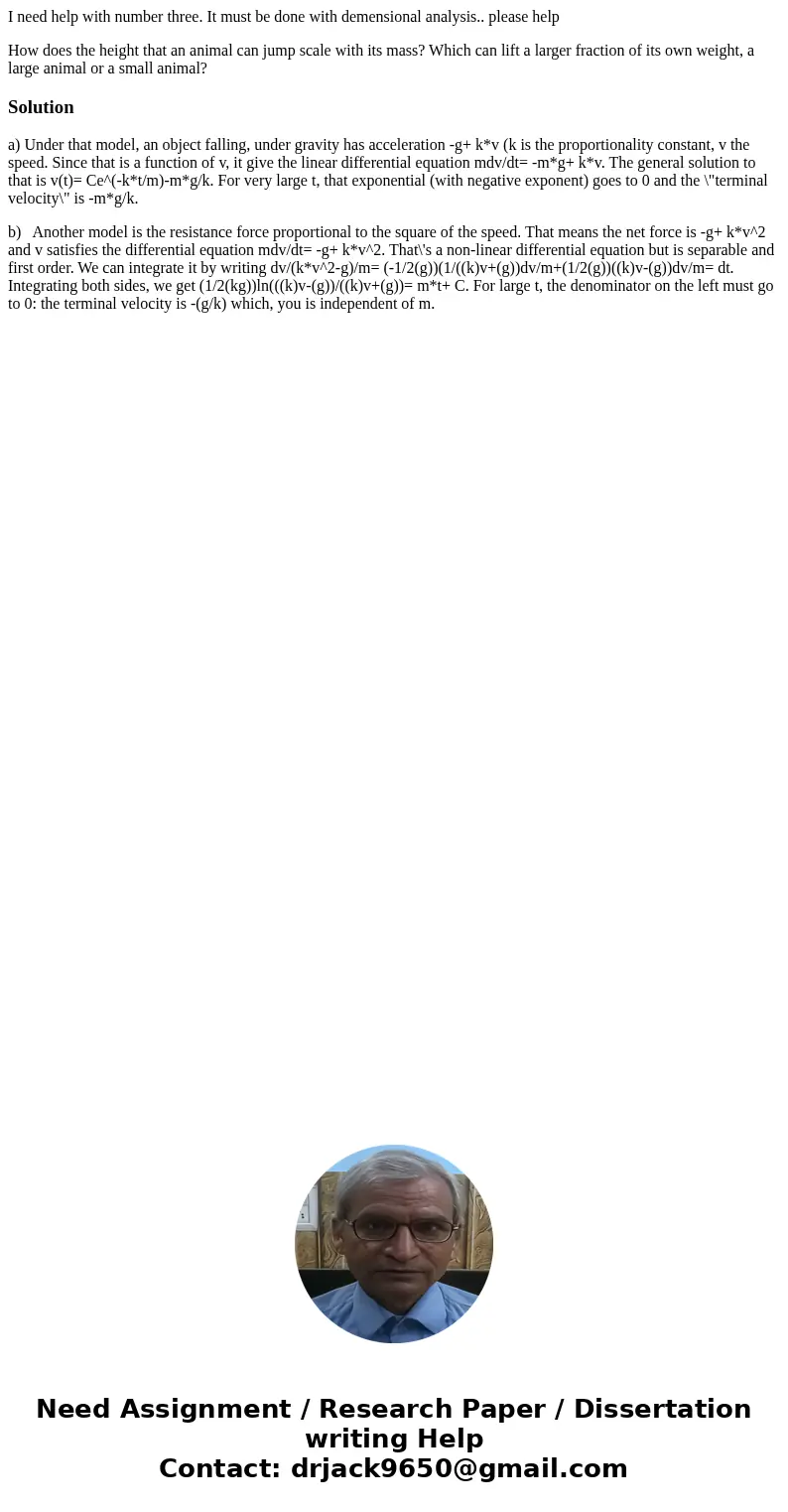I need help with number three It must be done with demension
I need help with number three. It must be done with demensional analysis.. please help
How does the height that an animal can jump scale with its mass? Which can lift a larger fraction of its own weight, a large animal or a small animal?Solution
a) Under that model, an object falling, under gravity has acceleration -g+ k*v (k is the proportionality constant, v the speed. Since that is a function of v, it give the linear differential equation mdv/dt= -m*g+ k*v. The general solution to that is v(t)= Ce^(-k*t/m)-m*g/k. For very large t, that exponential (with negative exponent) goes to 0 and the \"terminal velocity\" is -m*g/k.
b) Another model is the resistance force proportional to the square of the speed. That means the net force is -g+ k*v^2 and v satisfies the differential equation mdv/dt= -g+ k*v^2. That\'s a non-linear differential equation but is separable and first order. We can integrate it by writing dv/(k*v^2-g)/m= (-1/2(g))(1/((k)v+(g))dv/m+(1/2(g))((k)v-(g))dv/m= dt. Integrating both sides, we get (1/2(kg))ln(((k)v-(g))/((k)v+(g))= m*t+ C. For large t, the denominator on the left must go to 0: the terminal velocity is -(g/k) which, you is independent of m.

 Homework Sourse
Homework Sourse